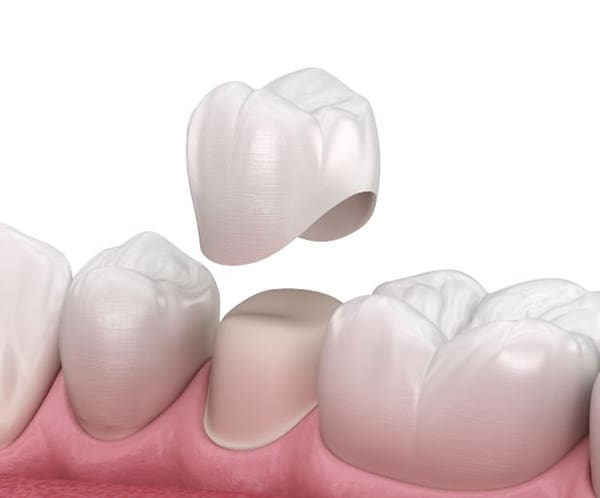
If you’ve ever had a tooth that was cracked, worn down, or severely decayed, your dentist may have recommended a dental crown. But what exactly is a dental crown, and why is it needed?
A dental crown is one of the most common and effective restorative treatments in modern dentistry. It not only protects and strengthens damaged teeth but also restores their natural shape, size, and appearance. In this post, we’ll break down everything you need to know about dental crowns, including when they’re used, how they’re made, and what to expect during the process.
What Is a Dental Crown?
A dental crown is a custom-made cap that completely covers a damaged or weakened tooth. It’s designed to look and function just like a natural tooth and is bonded into place to restore the tooth’s strength, shape, and appearance. Crowns can be made from a variety of materials including porcelain, ceramic, metal alloys, or a combination of these.
Crowns are often used when a tooth is too damaged to be repaired with a simple filling but doesn’t need to be removed entirely. They’re strong, durable, and can last many years with proper care.
When Is a Dental Crown Needed?
Dental crowns are used for a variety of reasons, including both restorative and cosmetic purposes. Your dentist may recommend a crown if you have:
- A cracked or broken tooth: A crown can hold a cracked tooth together and prevent further damage.
- A large cavity: If a tooth has too much decay for a filling to work, a crown can protect and restore it.
- A root canal: After a root canal, the tooth is weaker and more fragile, so a crown helps protect it from breaking.
- Worn down teeth: Teeth that have been worn down by grinding (bruxism) or acid erosion can be rebuilt with crowns.
- Cosmetic improvements: Crowns can improve the appearance of misshapen, discolored, or poorly aligned teeth.
- Dental implants: A crown is placed on top of a dental implant to replace a missing tooth.
Types of Dental Crowns
There are several types of crowns, and your dentist will recommend the best one based on your needs, location of the tooth, and budget.
- Porcelain or Ceramic Crowns: These are the most natural-looking and are often used for front teeth. They can be color-matched to your surrounding teeth.
- Metal Crowns: Made of gold or metal alloys, these are extremely durable and ideal for back molars where strength is a priority.
- Porcelain-Fused-to-Metal (PFM) Crowns: These combine the strength of metal with the aesthetics of porcelain. However, sometimes the metal can show through at the gumline.
- Zirconia Crowns: Known for their strength and natural appearance, zirconia crowns are becoming a popular option for both front and back teeth.
How to Care for a Dental Crown
Crowns don’t require special care, but good oral hygiene is essential to keep the supporting tooth and surrounding gums healthy. Here are some tips:
- Brush and floss daily.
- Avoid chewing hard objects like ice or pens.
- Wear a nightguard if you grind your teeth.
- Visit your dentist regularly for checkups and cleanings.
A Long-Lasting Solution
A dental crown is a reliable, long-lasting solution for protecting and restoring damaged teeth. Whether you’re dealing with a large cavity, a cracked tooth, or a recent root canal, a crown can help restore your smile’s function and appearance.
If you think you might need a crown or have questions about your dental options, talk to your dentist. They’ll help you choose the best solution to keep your smile strong and healthy.
